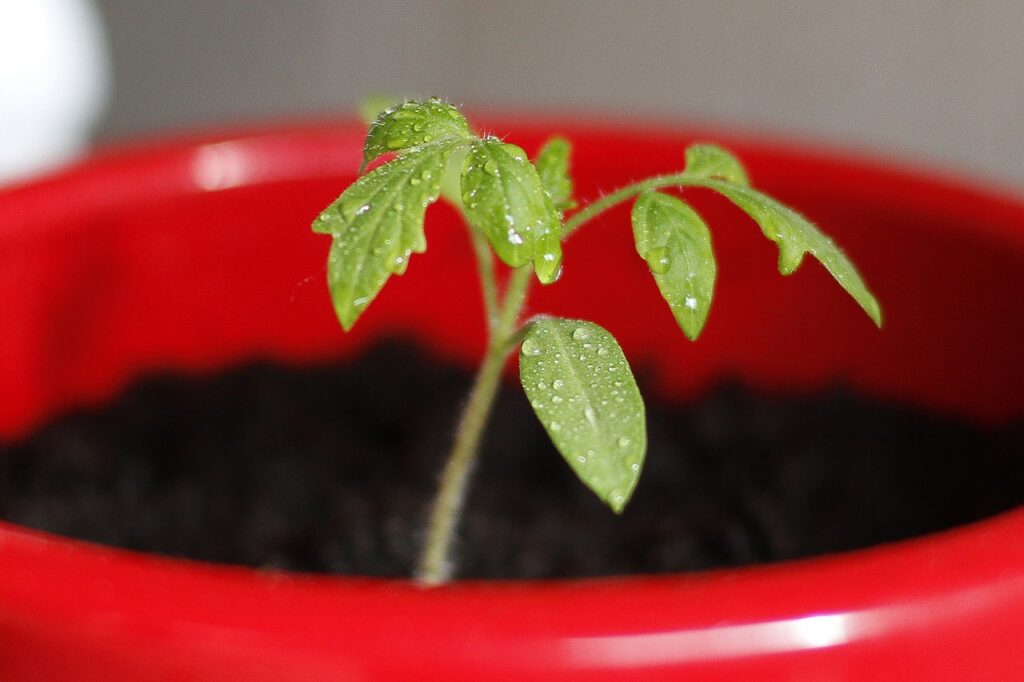
Tomatoes are a popular vegetable to grow at home, especially for those who live in urban areas and do not have access to a large outdoor garden. One way to grow tomatoes in an urban environment is to use containers. When it comes to selecting a container to plant tomatoes, there are several options available, each with its own advantages and disadvantages.
Clay or Terracotta Pots:
Clay or terracotta pots are a traditional option for container gardening. They are attractive and provide good drainage, which is essential for healthy tomato plants. However, these pots can dry out quickly, which means that they require frequent watering. Additionally, clay pots can be heavy to move around, which can be a consideration for those who need to move their plants indoors or outdoors depending on the weather.
Plastic Pots:
Plastic pots are lightweight, affordable, and come in a variety of sizes and colors. They are easy to move around and provide good drainage, but it is important to ensure that the pots have drainage holes to prevent waterlogging. The main disadvantage of plastic pots is that they can become brittle and crack over time, especially if they are exposed to direct sunlight.
Fabric Pots:
Fabric pots are made of breathable materials that allow for good drainage and aeration. They are lightweight and easy to move around, and they can be folded up for easy storage when not in use. However, because they are breathable, they can dry out quickly, which means that they may need to be watered more frequently than other types of containers.
Self-Watering Containers:
Self-watering containers have a built-in reservoir that allows for consistent moisture levels, making them a great option for those who may forget to water their plants regularly. These containers can be made of plastic, fabric, or other materials, and they come in a variety of sizes and styles. The main disadvantage of self-watering containers is that they can be more expensive than other types of containers, and they may require more maintenance to ensure that the reservoir is functioning properly.
When selecting a container for tomato plants, it is important to consider the size of the container. Tomatoes need a lot of room to grow and develop a healthy root system, so it is recommended to choose a container that is at least 18 inches in diameter and 24 inches deep. If you are planting more than one tomato plant in a container, make sure that the container is large enough to accommodate all of the plants.
Another important consideration when selecting a container is drainage. Proper drainage is essential to prevent waterlogging, which can lead to root rot and other problems. Make sure that the container has drainage holes in the bottom, and consider placing a layer of rocks or gravel in the bottom of the container to help improve drainage.
In addition to selecting the right container, there are a few other tips to keep in mind when planting tomatoes in containers. First, use high-quality potting soil that is specifically designed for container gardening. This type of soil will provide the right balance of nutrients and drainage for your tomato plants. Second, consider adding a slow-release fertilizer to the soil to provide your plants with the nutrients they need to grow and thrive. Finally, make sure to water your tomato plants regularly, especially during hot weather when the soil can dry out quickly.
In conclusion, container gardening is a great way to grow tomatoes in an urban environment. When selecting a container, consider the size of the container, the material it is made from, and its drainage capabilities. With the right container and proper care, you can enjoy a bountiful harvest of delicious tomatoes right from your own home.